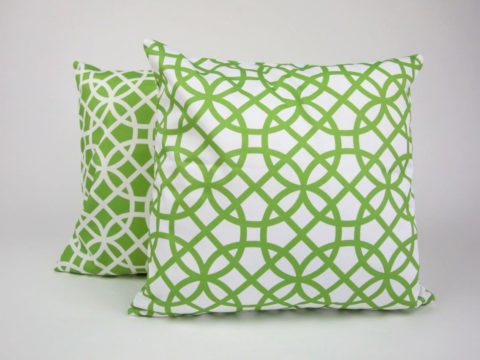Who's Who in Wolf Hall
Biographies of people whose lives entwined with Cromwell
Chapter 8 : Sadler - Shelton
Sadler, Sir Ralph, c. 1507 - 1587 Sadler entered Cromwell's service in around 1521, in his mid-teens, and became one of his closest confidants. By 1536, he was Cromwell's secretary, and thus would have come in to close contact with Henry VIII. He was appointed as a Gentleman of the Privy Chamber, and in 1537 was sent as an envoy to Scotland. By 1540 Sadler was one of Henry's two secretaries, and a Privy Councillor, as well as sitting in the House of Commons for various constituencies.
Although Sadler was arrested with Cromwell, he managed to clear himself of charges of treason and returned to the Council – taking a role in the condemnation of Queen Katheryn Howard, and remaining with the reformist group on the Council. He undertook further missions to Scotland negotiating for a marriage between Mary, Queen of Scots and Prince Edward. Replaced as secretary by William Paget, Sadler nevertheless remained in favour, becoming closely allied with Edward Seymour, Earl of Hertford. He was named as a member of the Regency Council in Henry VIII's Will.
A keen supporter of the Reformation, Sadler signed the Device for the Succession that attempted to put the Protestant Jane Grey on the throne. He avoided serious punishment, and remained on his estates during Mary's reign. Restored to favour under Elizabeth, he was again closely involved in Anglo-Scottish affairs, and, amongst others, pronounced the death sentence on Mary, Queen of Scots. Having married a widow by the name of Ellen Barre (nee Michell) in around 1534 and fathered seven children, Sadler and his wife were astonished when her first husband, believed dead for many years reappeared and was confirmed as Ellen's legitimate spouse. The couple were obliged to separate in 1545.In 1546, Sadler, influential in court circles obtained a private Act of Parliament to confirm his marriage and the legitimacy of his children.
Salinas, Maria de, Lady Willoughby d'Ereseby c. 1490 – 1539 A friend and lady-in-waiting to Katharine of Aragon, with whom she had come from Spain, Maria married an English nobleman and was the mother of Katherine Willoughby, Duchess of Suffolk. She was popular with Henry VIII, who named one of his ships after her, but in 1532 she was forced to leave Katharine of Aragon's service and was forbidden contact with her. When Katharine was dying in January 1536, Maria wrote to Cromwell, begging to be allowed to visit, but was refused. Ignoring the order, she talked her way into Kimbolton Castle to be with her friend in her last days.
Sampson, Richard, Bishop of Chichester. d. 1554 Sampson was a musician and composer and held various ecclesiastical positions. Although he supported Henry VIII's annulment proceedings, and the Royal Supremacy, he remained conservative in doctrine, and was thrown into the Tower along with Lord Lisle in 1540. Eventually released, he became Bishop of Chichester in 1543 and remained in post throughout Edward VI's reign, although he is said to have recanted his position on Royal Supremacy, and returned to the Papal fold. This may have been under Mary, which would explain why he was not deprived of his see.
Scrope, Mary, Lady Kingston d. 1548 Wife of the Constable of the Tower, Lady Kingston was set to wait upon Queen Anne Boleyn during her imprisonment, and report her every word. Anne objected to being surrounded by her enemies, but to no avail.
Sexton, or "Patch" Cardinal Wolsey's Fool whom he sent as a gif to Henry VIII when his household was broken up. Sexton was deeply distressed by the transfer.
Seymour, Edward, Earl of Hertford, Duke of Somerset c.1500 – 1552 Seymour first appears as a member of the household of Mary, Queen of France in 1514. He rose to prominence in the mid-1530s when his sister Jane became Queen, being ennobled as Viscount Beauchamp and Earl of Hertford.
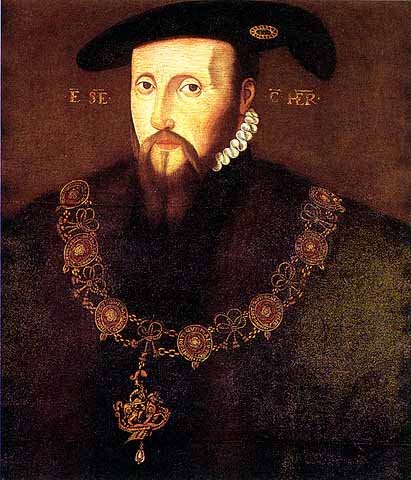
He was a Privy Councillor and much favoured by the King. He was also an extremely successful military commander during the Wars of the Rough Wooing in Scotland, eventually capturing and burning Edinburgh.
Initially associated with Cromwell, and on sufficiently good terms to allow his widowed sister, Elizabeth, to marry Cromwell's son, Gregory, Hertford was later part of the conspiracy to topple him. Hertford was a reformist in religion, and spent the last few years of Henry's reign trying to secure his position as potential regent to his nephew. In the event, Henry did not name a single man as regent, but a whole council.
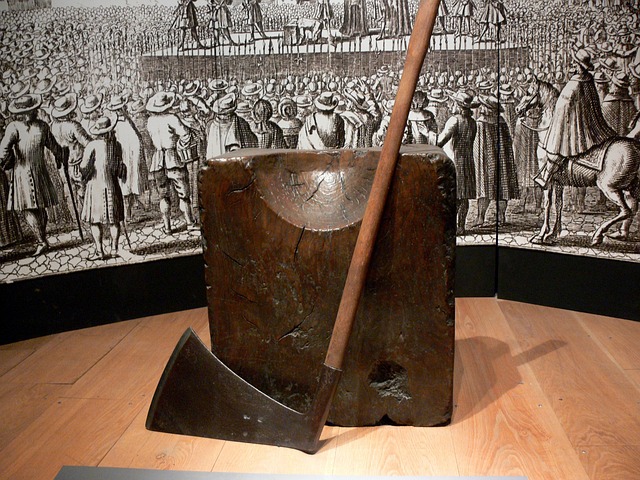
Hertford, however, managed to take entire control and was known as Lord Protector, buoyed by a new Dukedom. In due course, he over-reached himself in antagonising the other councillors and was displaced by his erstwhile supporter, John Dudley, Duke of Northumberland. Somerset's death warrant was signed by his nephew and he was beheaded.
Seymour, Elizabeth, Lady Oughtred d.1568 Elizabeth, younger daughter of Sir John Seymour, was first married to Sir Anthony Oughtred, Governor of Jersey in about 1531. There was a wide disparity in age, Sir Anthony being at least fifty-one and Elizabeth probably in her early twenties.
Elizabeth gave Henry VIII a fine shirt for a New Year present in 1532. Widowed in 1534 Elizabeth wrote to Cromwell in 1537 asking for help in obtaining one of the Yorkshire abbeys, soon to be dissolved. By the end of the summer of that year, she was married to Cromwell's son, Gregory. This was an enormous honour for the Cromwell family, as Elizabeth's sister, Jane, was Queen of England. Widowed again in 1551, Elizabeth married for a third time, the son of the Marquis of Winchester.
Seymour, Jane, Queen of England c. 1507 – 1537 Jane, like her second cousin, Anne Boleyn, came from a well-connected gentry family, and her mother, Margery Wentworth, was renowned for her beauty and wit. Little is known of Jane's early life, but she was a maid-of-honour to Katharine of Aragon in 1529 before transferring to the household of Queen Anne. Henry appears to have noticed Jane some time in autumn of 1534. Jane, taking a lesson from Anne, refused to become his mistress, although she refused in a demure, rather than flirtatious way. Cromwell, always eager to please the King, gave up his apartments to Jane's brother, Edward, so that the King could visit her more easily.
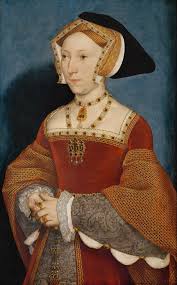
Many were perplexed at Henry's desire for Jane, as she was not considered beautiful, and was certainly not so well-educated as Katharine and Anne had been. She is, however, described as "gentle" so perhaps that was an antidote to Anne's strong personality. On becoming Queen, Jane built a warm relationship with her step-daughter Mary, and delighted the King by producing the longed-for son. She did not live long enough to enjoy her triumph, dying within a couple of weeks of Edward's birth.
Seymour, Sir John 1474 – 1536 Sir John Seymour of Wolf Hall, Wiltshire, was a minor courtier under Henry VII and Henry VIII, being present at the Field of Cloth of Gold in 1520. His first brush with fame came when a scandal broke about his affair with Katherine Filliol, wife of his eldest son, Edward. Katherine was cast off, and her two children declared illegitimate. Sir John's next experience in the limelight was more satisfactory, as his daughter, Jane, became the third wife of Henry VIII.
Shelton, Mary c. 1510 – 1571 Anne Boleyn's first cousin, and maid-of-honour, Mary has been named as a possible mistress of Henry VIII, although there is no proof of such a relationship. It is also not clear whether she had a sister "Margaret/Madge" or whether the two are the same woman.
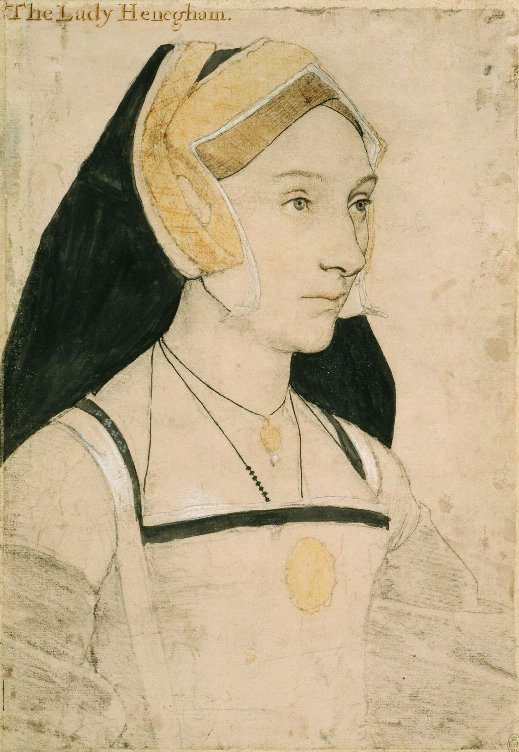
Mary was part of the circle round Queen Anne that wrote and exchanged the verse contained in the Devonshire Manuscript. Her friends were Mary, Duchess of Richmond, Lady Margaret Douglas, Sir Thomas Wyatt, Henry Howard, Earl of Surrey and Sir Thomas Clere. Mary Shelton was betrothed to Sir Henry Norris, and it was she whom he was supposed to be visiting on his trips to the Queen's Apartments, when Queen Anne accused him of looking to marry her, should anything happen to the King. Mary married Sir Anthony Heveningham in about 1540, and had two further husbands.
This article is available for Kindle, for purchase from Amazon US and Amazon UK.
